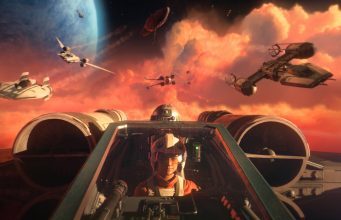
Star Wars: Squadrons is here, the space dogfighter from EA’s Motive Studios. Although it was created primarily for console and PC, the game also includes a VR mode for SteamVR headsets and PSVR which allows you to play both the entire single player campaign and multiplayer component from the immersive first-person view of your VR headset. While it lacks a few of the things we’ve come to expect from a game built from the ground up for VR, it makes up for these design concessions by delivering an awesome full-length campaign, a serviceable multiplayer mode, and graphics so refined that you’d swear you were truly stepping inside the Star Wars universe.
Star Wars: Squadrons Details:
Available On: SteamVR (Steam, Epic Games, Origin), PSVR
Release Date: October 2nd, 2020
Price: $40
Developer: Motive Studios, EA Games
Reviewed On: Quest (via Link), Oculus Rift
Gameplay
It seemed like yesterday when the whole VR community was hyped for the release of Star Wars: Battlefront Rogue One X-Wing VR Mission (2016). It was a modest free DLC to the base game on PS4, but it symbolized a beginning commitment by EA Games to people somewhere in the middle of the Venn diagram of Star Wars fans and VR enthusiasts. Years have passed, and it wasn’t clear whether the studio would make good on its tantalizing first glance at VR.
But now Star Wars: Squadrons is here, and it’s easy to imagine what a big budget—I mean a truly massive budget—can bring to the table in terms of visual polish, voice acting, writing, and just about everything that’s missing in VR now. Despite having dipped their collective toes into the medium early on, EA is a relative newcomer to the scene when it comes to VR games, so I wasn’t sure what to expect going into the VR mode of Star Wars: Squadrons.
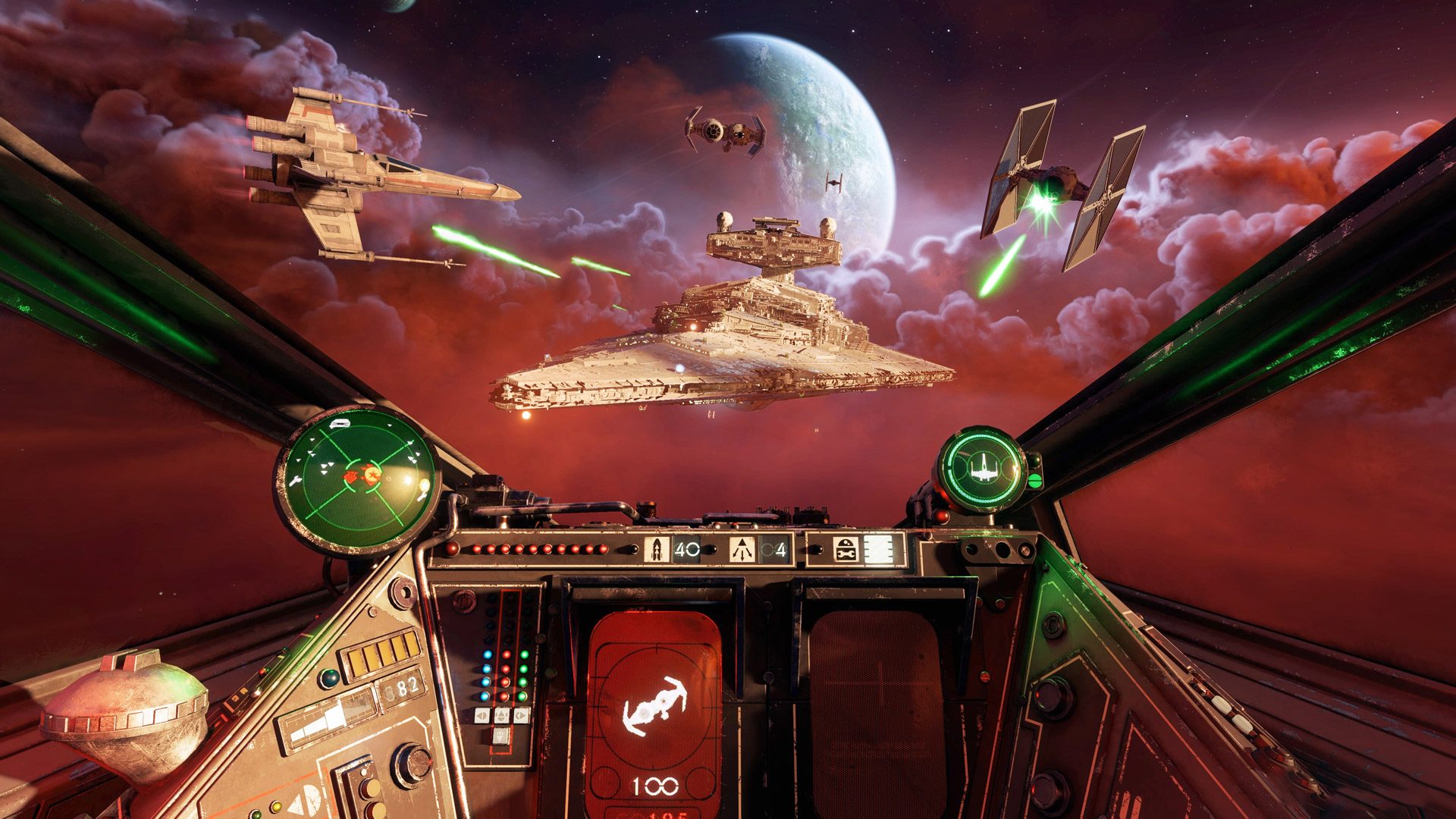
I’m here to say: Star Wars: Squadrons is awesome…with a few caveats—minor design gripes that you will probably forgive in the face of the game’s immersive, fully-realized cockpits of the franchise’s most beloved fighter ships, the well-crafted story missions that toss you from Empire to New Republic across 14 levels, and the ranked multiplayer mode that will have you battling anyone with the game, console, PC, and VR headset alike.
Single Player
Booting up in VR is unfortunately a bit of a pain, requiring you to start from outside the headset in order to toggle on the VR mode in settings. You’ll need to forget your motion controllers entirely too, because the only control schemes are keyboard and mouse (on PC), gamepad, and HOTAS flight sticks. I played with my Xbox One controller, although the game is really begging for a HOTAS setup for full immersion. I don’t own one, but even then Squadrons was a joy to play. It’s also exceptionally hard if you’re up for the challenge. More on that below.
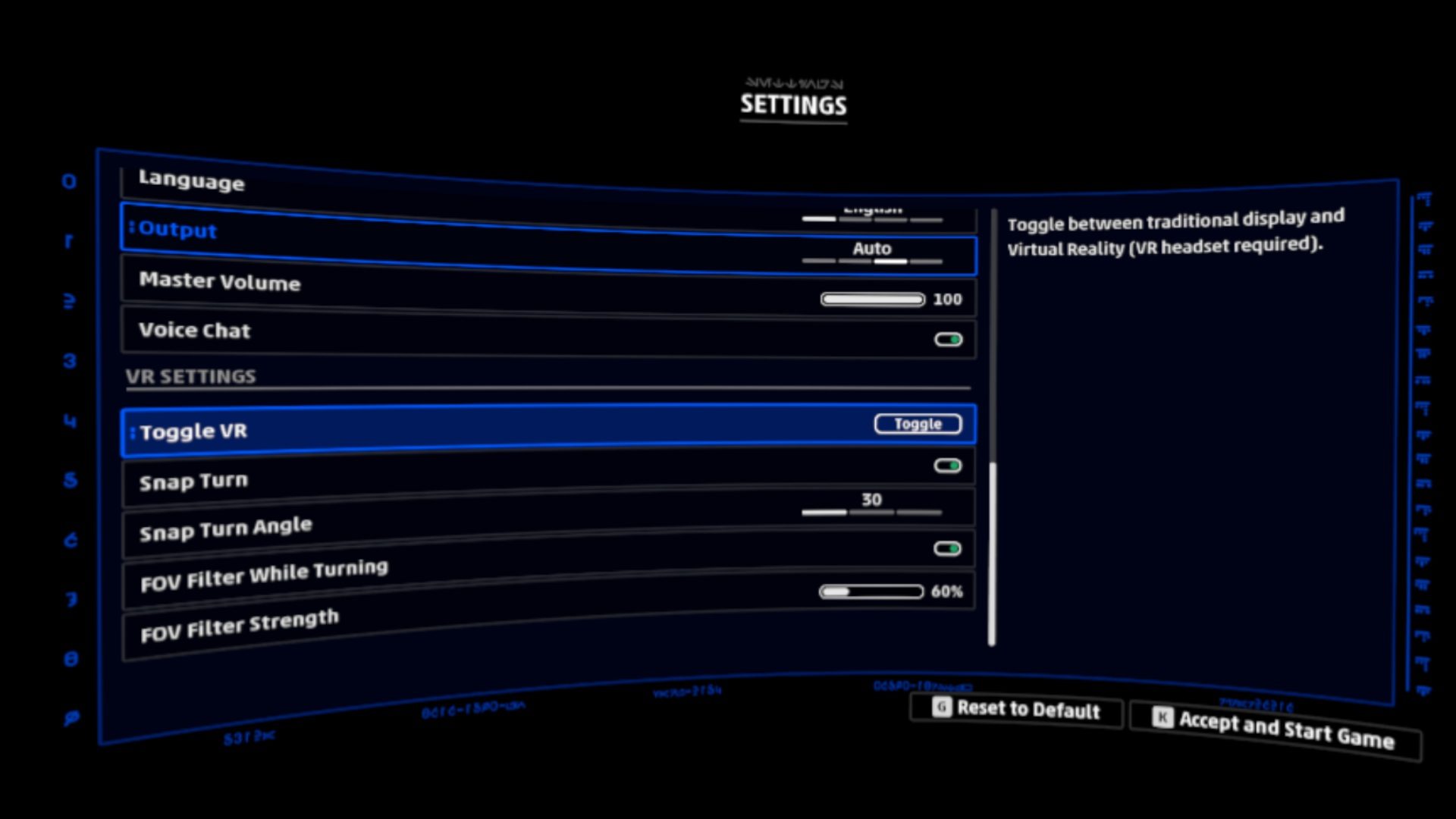
You’re first kicked into the mandatory Prologue, which gives you some a really basic tutorial on flying and shooting, and also sort of lures you into the single player campaign too where you’ll get a more complete look at what each of the game’s ships have to offer. Don’t be mistaken though, the single player mode isn’t a glorified tutorial like you might have seen in other games, but rather a full eight-hour experience that features a cast of characters on both sides of a galactic game of cat and mouse.
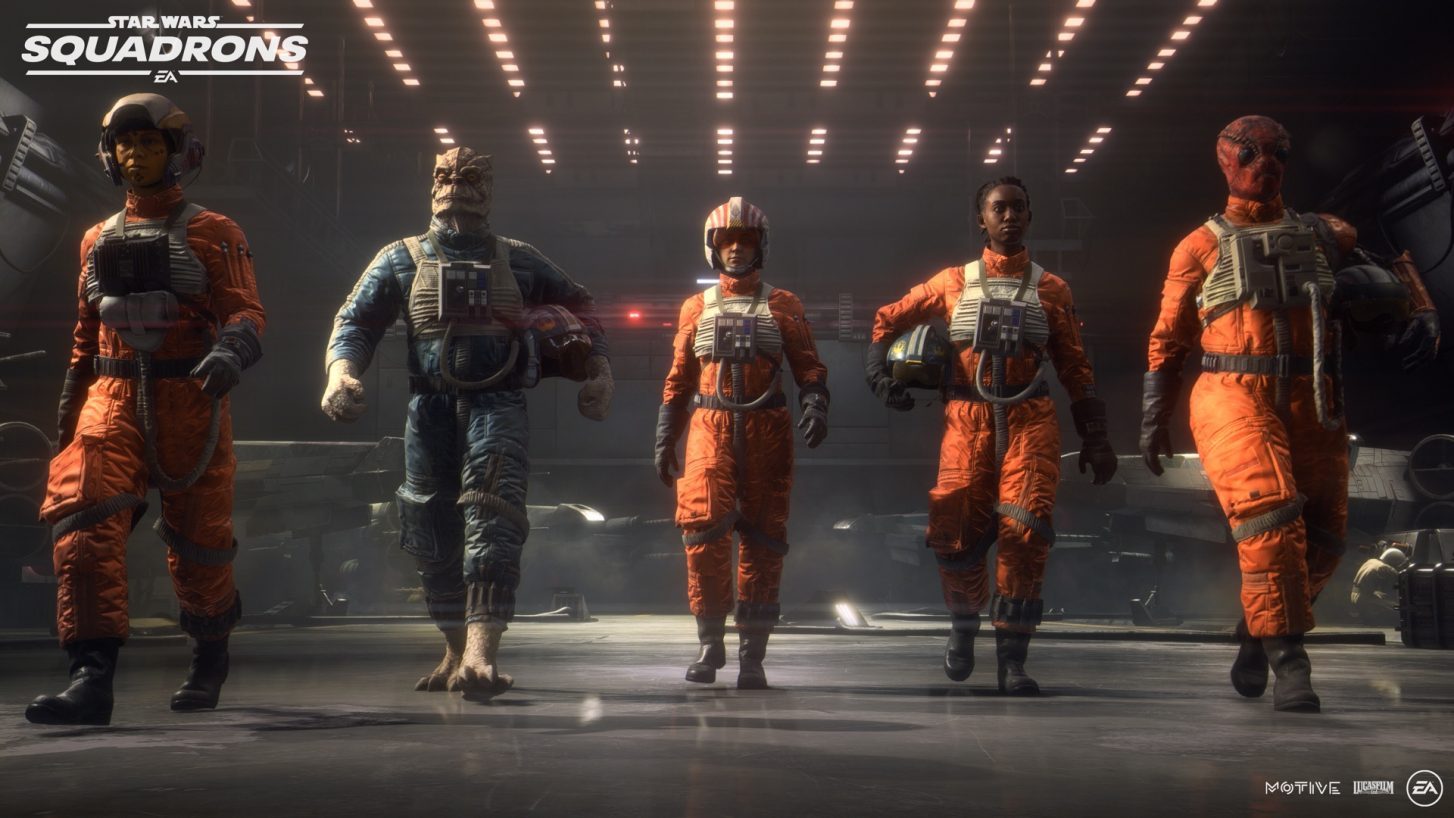
I won’t spoil anything here, but suffice it to say that the story mode is definitely worth playing all the way through, which can be done on four difficulty modes: Story Mode (practically impossible to die), Pilot, Veteran and Ace. The story mode includes a few familiar faces, and and some new ones too. Without reservation, I can say Squadron’s puts some of the new films to shame in terms of writing quality and character development, and that’s even on the ancillary characters who are just along for the ride, who you meet back at the hangars for one-way chats.
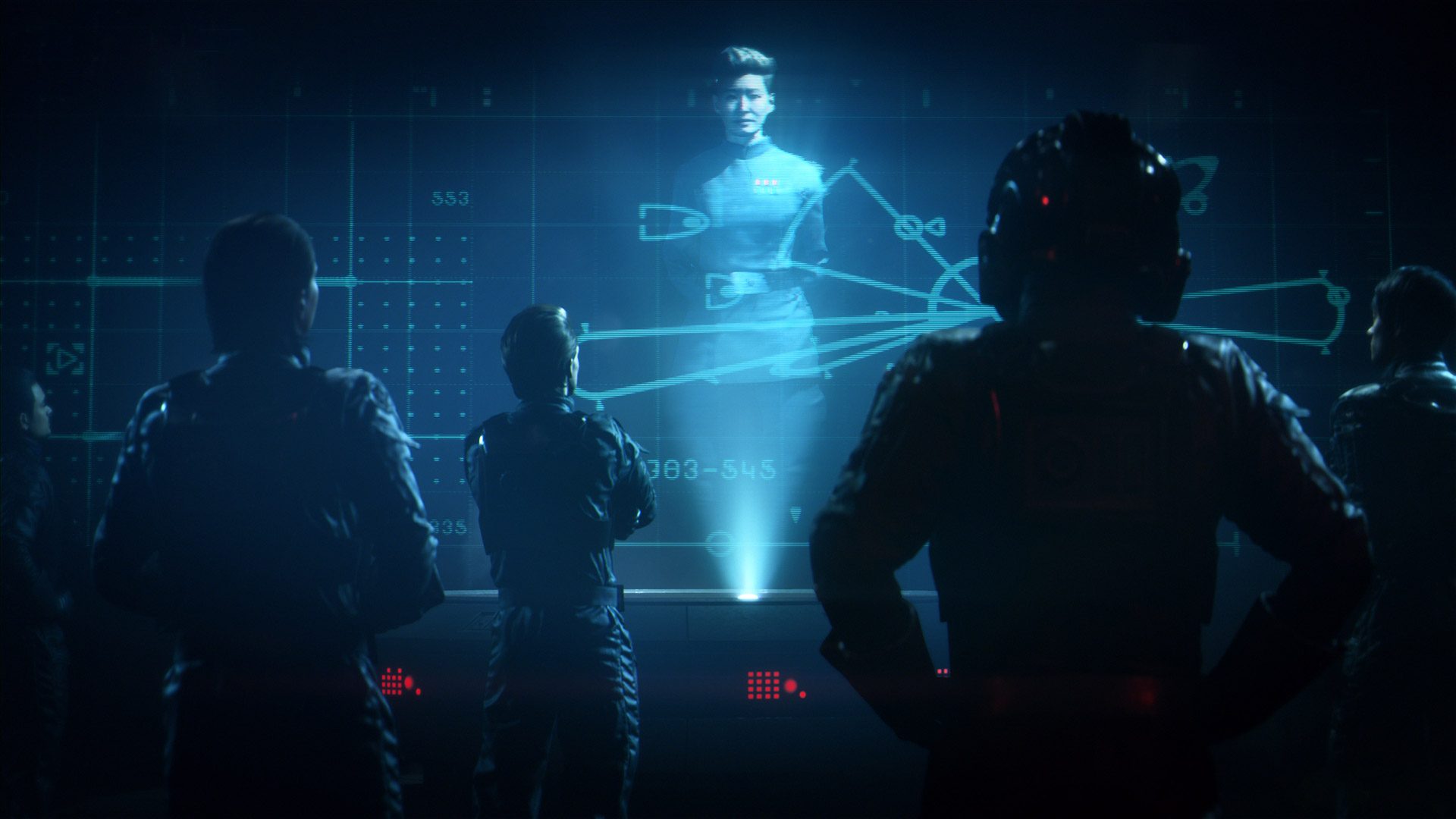
Throughout the story, you’re introduced to all of the game’s ships, which include a cast of TIE fighters and bombers on the Empire side, and an assortment of iconic rebel fighters on the New Republic side. About halfway through you’re then given mostly free reign on what ship you want to take and what loadout you want to equip it with.
The UI can be really overwhelming at moments, as you’re fed multiple streams of info, from tutorial info on how to use new weapons, to enemy icons, to selector switches that let you reprioritize your level of speed, firepower, and shields. If you ever find yourself dying too much and being overwhelmed, you can always kick down the difficulty level, which predictably makes enemies both dumber and easier to kill. Story Mode still requires effort, but enemy lasers are less effective, and your teammates rain heals down on you.

Flying is a familiar experience for anyone who’s played arcade space sims before, although you’ll still probably need some time to get used to each ships’ turning abilities and loadout array. I found myself constantly switching back to the controller menu to bone up on button placement due to the number of weapons, shields, and other functions you can do in the game.
Multiplayer
Multiplayer offers ranked matches that divide you into one of four classes: Fighter, Interceptor, Bomber, and Support, all of which are pretty self explanatory for anyone who’s played a modern team shooter. It’s still early days, so you’re likely to find a wide mix of player levels as soon as you boot into multiplayer. Team chat is automatically enabled so you can strategize with other players across multiple mission types, including team death match called ‘Dogfights’ and ‘Fleet Battles’, which include attack and defend on each team’s Capital Ships.
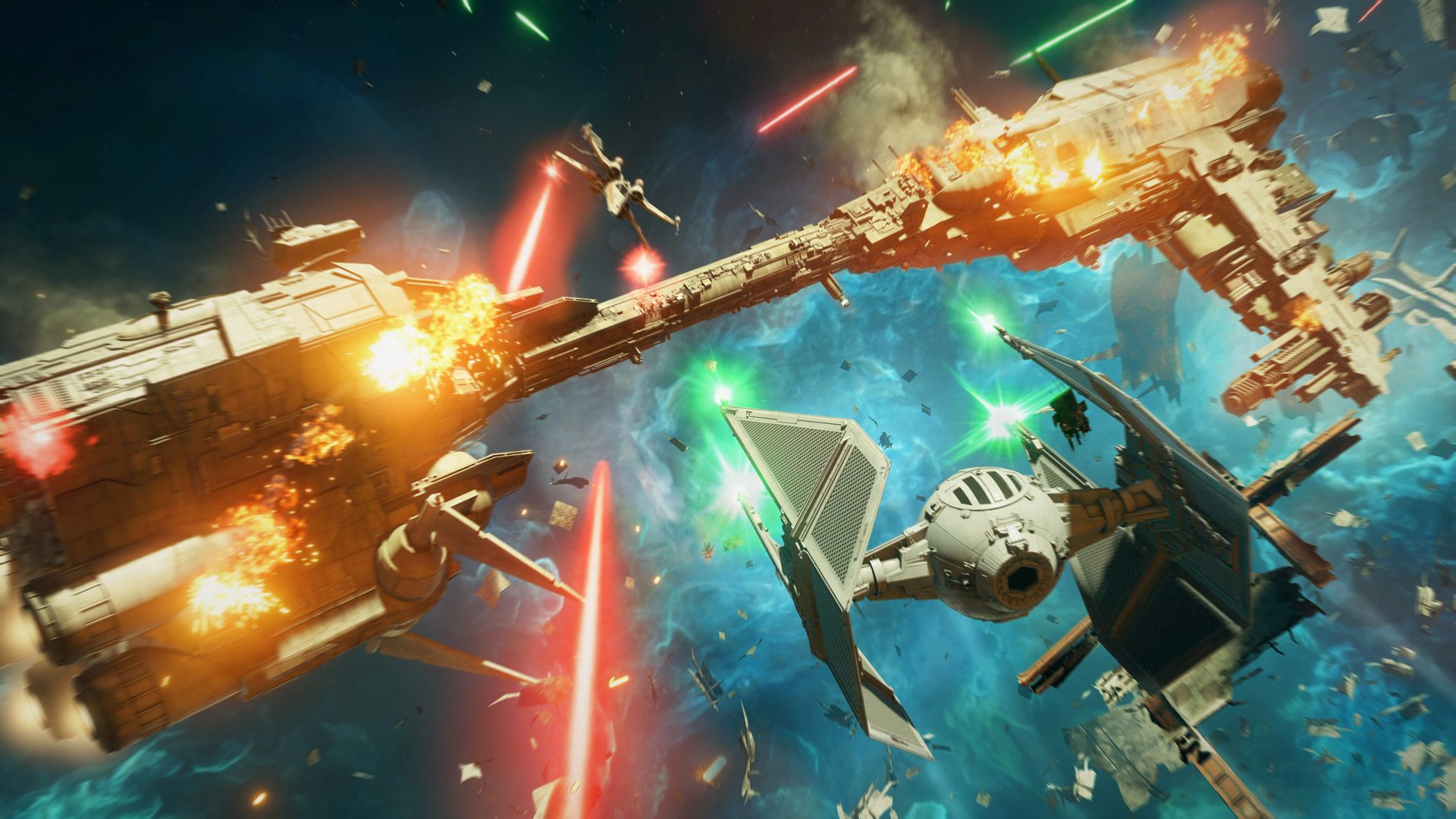
I found myself flashing back to EVE: Valkyrie (2017) somewhat, as the game’s multiplayer is very similar, offering up your standard set of various asteroid fields dotted with pickups like repair modules. If you’re totally content with those two modes, you may be completely happy with multiplayer, although I would have liked to see more game modes to mix things up. Suffice it to say, you’ll never run into a bot since there’s gads of players across Xbox, PS4 and PC. I still think multiplayer will need bigger and better modes to keep people coming back for more.
I’m not great, but I also had the chance to play the campaign all the way through, something that helped me gain familiarity with the ships systems, like boosting firepower on the fly and then escaping with quickly with boosted engine power. I’m not certain I had a leg up on console/PC players though, as the ships FOV is naturally limited and it’s easier to get overwhelmed with the sheer amount of info flying at you left, right and center.
Thankfully there’s no pay-to-win component here; the only thing available are ship and avatar skins which you gain as you level up.
Immersion
One of my biggest complaints is the lack of motion controller support. Looking at the finely-tuned interior of the ships really calls out for more immersion, and a greater ability to flip switches and mess with targeting computers. I get why it isn’t, partly because it would kill the fast-pace nature of the game, but it’s still something you’d expect from a VR game nowadays.
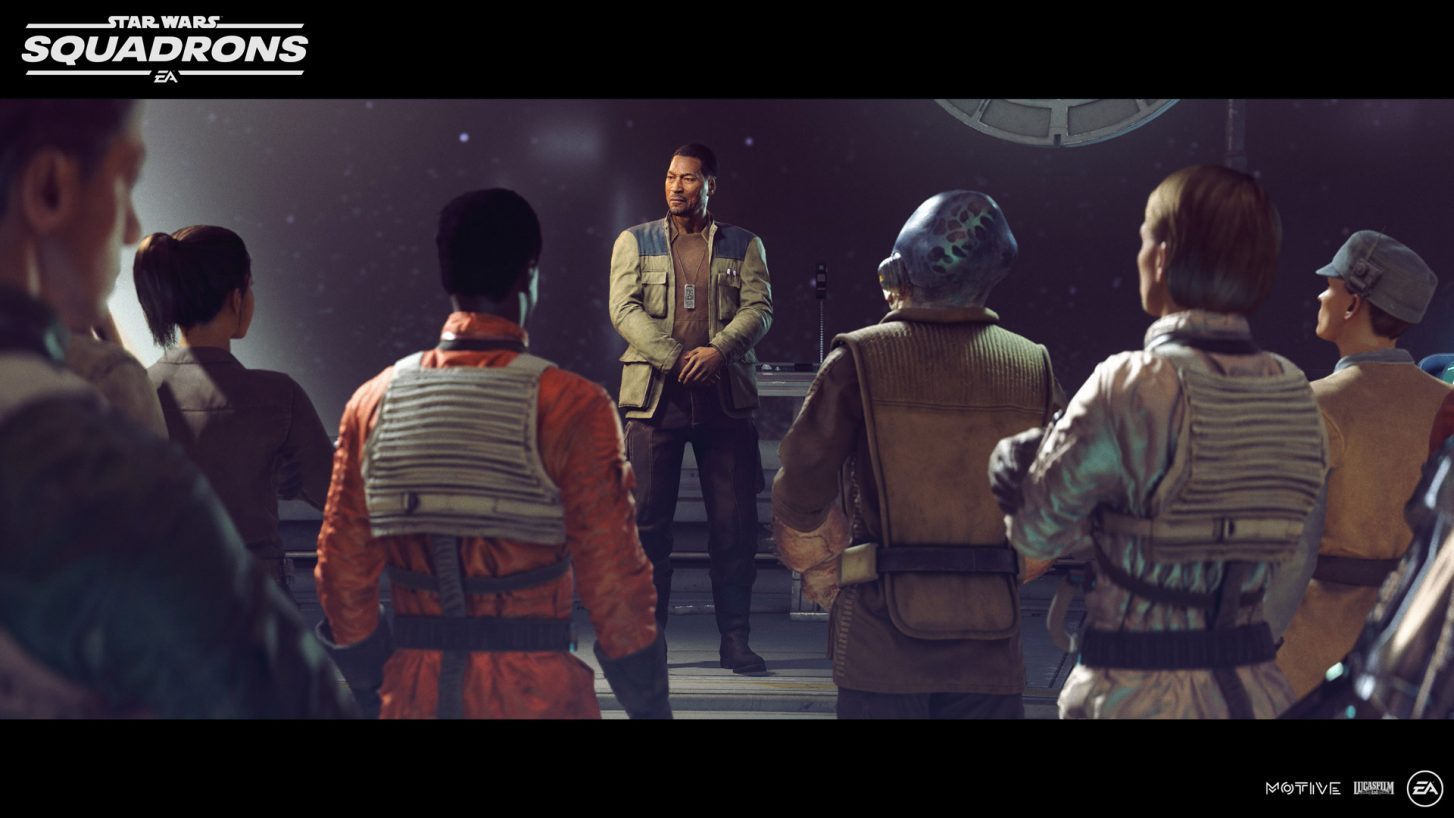
Still, I can’t overstate just how pretty the game looks. On Oculus Quest (via Link) I ran into constant frame drops and tracking hitches with my GTX 1080, which is above the game’s minimum spec of GTX 1060. Still, this probably had more to do with system-level encoding for Link and not the game itself. Booting up with Rift immediately showed that the game ran smoothly on high settings, which showed off the game’s shadows, dynamic lighting, surface reflections, and massive galactic scale in all its sci-fi glory. EA could have easily dumbed down both the ships’ interiors and exteriors, but the level of detail everywhere is astounding to see in VR.
Cutscenes are all presented in a curved 2D display, which is a bit of a letdown, but I can understand why the studio kept them this way. Still, you’re not losing out on too much, as you’re also given the opportunity to teleport around the hangar and visit crew members, all of whom have unique personalities and dialogue about the results of missions.
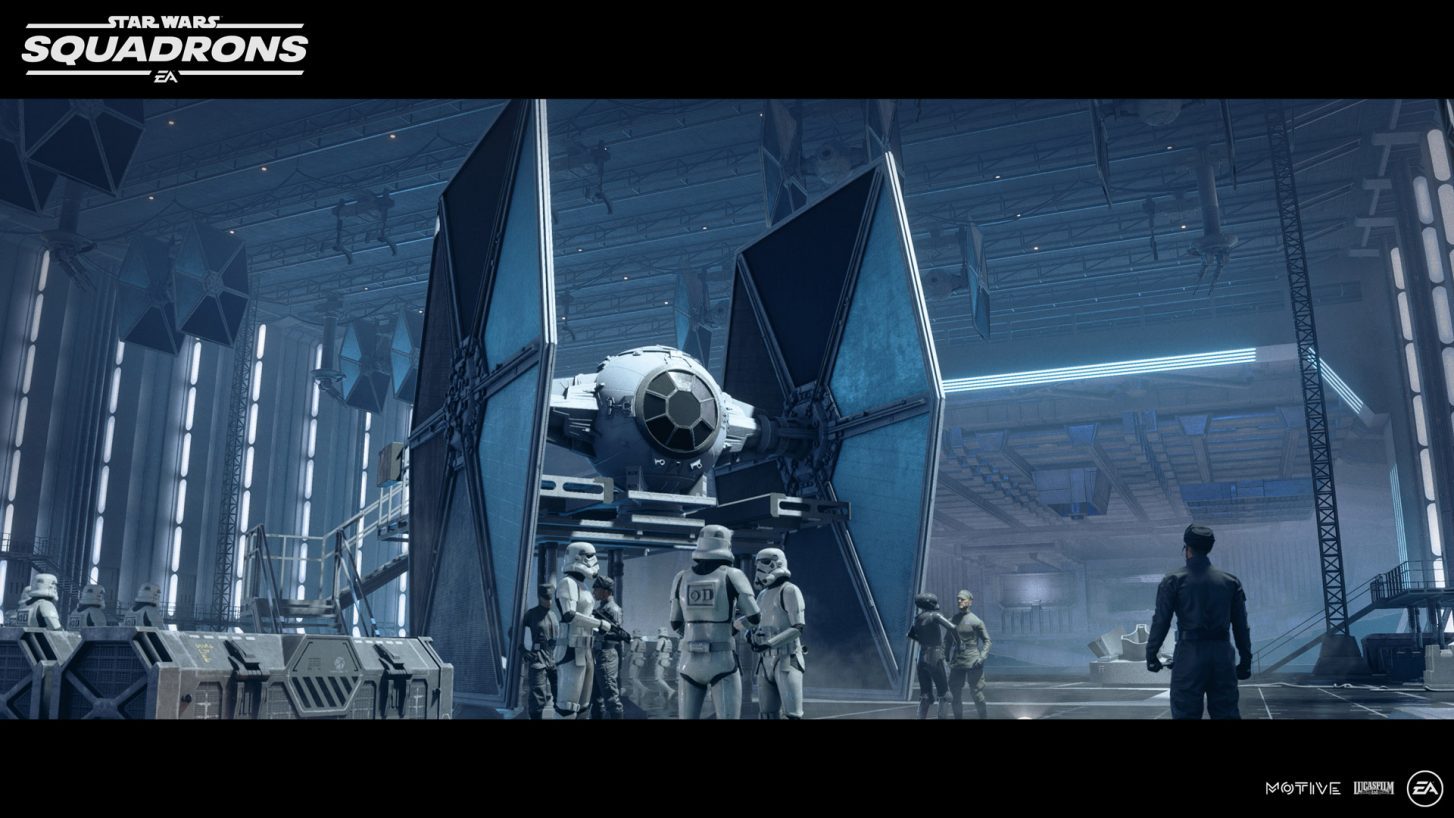
Talking with crew members isn’t interactive, like you might see in an RPG, but the fine attention to detail with character mocap, textures, and cloth simulation are all top notch. Characters very nearly push to the other side of the uncanny valley, which is further enhanced in VR since you’re looking at the characters face-to-face. Voice acting is also stupendous, which anyone would be able to appreciate across the board, however it’s a pity players on flatscreen can’t appreciate the game’s characters like you can in VR.
In any case, the test of a VR mode is whether you would stay in VR, or just play it out on flatscreen. If you’ve read this far, you’ll probably know my answer is a resounding yes.
Comfort
I’ve definitely had a hard time with VR dogfighters in the past due to the tight turning and loop-de-loops that are necessary to get a bead on enemy ships. In general, a cockpit helps stave off nausea thanks to the continual reference point, although I’ve definitely pushed past my comfort level in the pursuit of keeping up with the competition.
The game’s cockpits are heavy and typically pretty enclosed. The worst offender is the TIE fighter, which can be construed as a good or bad thing depending on your comfort level. It’s good because the ship’s tiny front-facing window limits you field of view for more comfort, but it also kills you peripheral, making you depend more on instruments and UI to pursue enemies. I don’t think the developers could do much about this since the TIE fighter is engrained in the universe’s lore since the late ’70s.
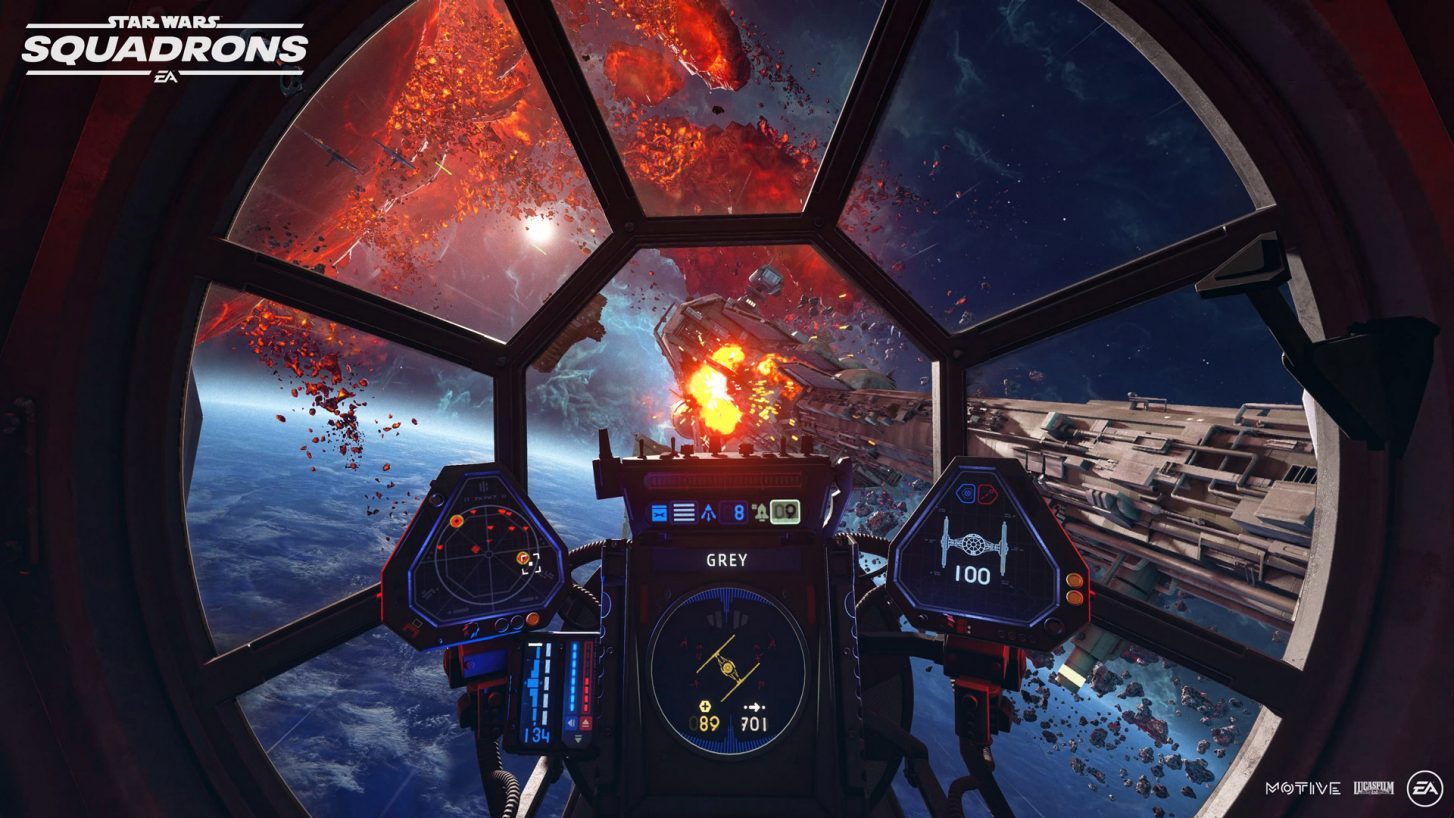
Even the comparatively open X-wing offers plenty of metal to keep you grounded in your flying cage though. Motive does a few other things to mitigate this though by adding in heaps of particle effects to give you more of a grounding in the wide open spaces, something you really shouldn’t underestimate for user comfort. In all, I played for hours at a time with no effect across all of the game’s ships, and I’ve had issue in the past with EVE: Valkyrie.
Outside of the cockpit back at base, you can teleport around to specific nodes to hear character dialogue. Snap-turn is there, but if you have a swivel chair or a working neck, you probably won’t need it.
The post ‘Star Wars: Squadrons’ Review – The New Top Gun of VR Dogfighters appeared first on Road to VR.
Ream more: https://www.roadtovr.com/star-wars-squadrons-review/
No comments:
Post a Comment